 All of the blog upgrades are now done and everything seems to be working OK. It’s nice that software developers continually upgrade their programs and provide bug fixes, but it does get annoying at times to have to do these constant upgrades. This is my third upgrade this year (it’s only June) and I have skipped others that I could have done. Once upon a time, I was a software developer myself and, having to work with my customers to upgrade their systems, I always tried to make it as painless as possible. But it’s never completely painless…
All of the blog upgrades are now done and everything seems to be working OK. It’s nice that software developers continually upgrade their programs and provide bug fixes, but it does get annoying at times to have to do these constant upgrades. This is my third upgrade this year (it’s only June) and I have skipped others that I could have done. Once upon a time, I was a software developer myself and, having to work with my customers to upgrade their systems, I always tried to make it as painless as possible. But it’s never completely painless…
So, for the moment, anyway, we’re on the current release of WordPress (2.2.1). All of the security issues in the old release have been (supposedly) plugged – now we just have to wait for the hackers to find the holes in this release 🙂 Even the spelling checker works now! But WordPress still can’t handle whitespace very well. The pre 2.0 releases handled it just fine – if you wanted a couple of blank lines in your post, just hit the Return bar a couple of times and there you go. Now, all of the extra whitespace is automatically deleted by the editor, an attempt, I suppose, to force everyone to modify the .css files instead. Of course that complicates future upgrades… WordPress has now also made Widgets the preferred method of maintaing the Sidebar (Widgets used to be available as a plugin, now it’s part of core code). I could have kept all of my old sidebar hacks, but did want to upgrade to the new method, and that, of course, also complicated things. They have Widgets called “Text Boxes”, basically places where you can plug in HTML code and place them on the sidebar where you want. But Text boxes can’t handle php. For that you need a plugin (Execphp), so I had to install that, too. But at the end of the day it all seems to work and, I hope, future upgrades will be less lengthy…
I’ve also upgraded to the current release of the WordPress theme I use, Blix Krieg. It is an offshoot of the original Blix theme, one which does not seem to be maintained anymore. Blix Krieg is maintainted by theDuck, an Aussie who seems like a nice chap. And the theme works flawlessly.
I’ve also dumped Sitemeter – it was just so unreliable. It lost several days of statistics for me on more than one occasion, and I’ve long suspected it if undercounting my site visitors. In it’s place, I’ve installed StatCounter. Perhaps it’s just a busy day today, but already my site stats are higher than before.
Finally, I’ve also fixed (I hope) my RSS feeds. I was using Feedburner but discovered, much to my dismay, that somehow I was burning two Feedburner feeds. Perhaps this is why they weren’t working properly. I’d like to thank all of my readers who took the time to either drop an comment or email to me to let me know how my RSS feed was working (or not) for them. Hopefully, this is a solved problem now, too.
As always, if you run into something on my blog that doesn’t work, please let me know.
Now all I have to do is to get the long delayed photo gallery up and running and I’ll be all set…
![]() In his post “A Boost from Balloons?” on his Cosmic Log, Alan Boyle details the possibilities that LiftPort may have in using it’s Tethered Tower application to stay afloat (pun intended). Alan talks about his conversations with LiftPort’s Michael Laine and their latest demo (the preparation of which was described somewhat painfully here).
In his post “A Boost from Balloons?” on his Cosmic Log, Alan Boyle details the possibilities that LiftPort may have in using it’s Tethered Tower application to stay afloat (pun intended). Alan talks about his conversations with LiftPort’s Michael Laine and their latest demo (the preparation of which was described somewhat painfully here). LiftPort/Tethered Towers may have one or more potential customers for this product and that may be enough for them to stay solvent and continue on their quest to build a Space Elevator. Let’s hope so…
LiftPort/Tethered Towers may have one or more potential customers for this product and that may be enough for them to stay solvent and continue on their quest to build a Space Elevator. Let’s hope so…
 Today I heard back from Mr. Shiuchi Ohno, one of the founders of the newly formed Japan Space Elevator Association (JSEA). I had emailed them a few questions – here are his responses;
Today I heard back from Mr. Shiuchi Ohno, one of the founders of the newly formed Japan Space Elevator Association (JSEA). I had emailed them a few questions – here are his responses; On this date, 38 years ago, mankind put it’s
On this date, 38 years ago, mankind put it’s  The first half of this 25 minute long YouTube video (originally from
The first half of this 25 minute long YouTube video (originally from  The
The  In preparation for this year’s
In preparation for this year’s 
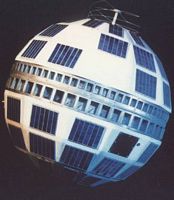
 On the Team Snowstar
On the Team Snowstar 
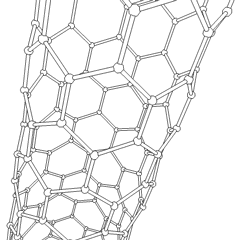 In a related article, “
In a related article, “ As ScienCentralNews
As ScienCentralNews  One of the entrants in the 2006
One of the entrants in the 2006  As reported today on
As reported today on 


 One of the new contestants in this year’s Space Elevator Games is
One of the new contestants in this year’s Space Elevator Games is  All of the blog upgrades are now done and everything seems to be working OK. It’s nice that software developers continually upgrade their programs and provide bug fixes, but it does get annoying at times to have to do these constant upgrades. This is my third upgrade this year (it’s only June) and I have skipped others that I could have done. Once upon a time, I was a software developer myself and, having to work with my customers to upgrade their systems, I always tried to make it as painless as possible. But it’s never completely painless…
All of the blog upgrades are now done and everything seems to be working OK. It’s nice that software developers continually upgrade their programs and provide bug fixes, but it does get annoying at times to have to do these constant upgrades. This is my third upgrade this year (it’s only June) and I have skipped others that I could have done. Once upon a time, I was a software developer myself and, having to work with my customers to upgrade their systems, I always tried to make it as painless as possible. But it’s never completely painless… I’m upgrading to WordPress 2.2.1 and Blix Krieg 2.2 today, Monday, June 25th. So, if things look funky when you visit, check back in in a couple of hours and all should be set right.
I’m upgrading to WordPress 2.2.1 and Blix Krieg 2.2 today, Monday, June 25th. So, if things look funky when you visit, check back in in a couple of hours and all should be set right.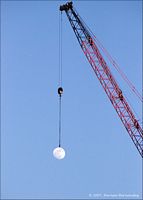
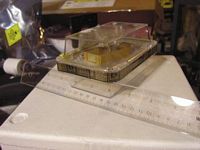

 One of my favorite blogs is
One of my favorite blogs is  A “Future History”
A “Future History”  On June 11th,
On June 11th, 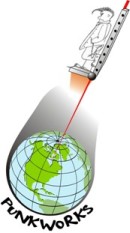
 This quote is taken from Dr. Brad Edward’s PowerPoint presentation posted on the
This quote is taken from Dr. Brad Edward’s PowerPoint presentation posted on the  I subscribe to Marc Boucher’s daily emails from his
I subscribe to Marc Boucher’s daily emails from his 
 No, not really, but I liked the
No, not really, but I liked the 
 What they need to do is to focus this beam onto a lake or pond and have a model sailboat travel through the focal point. Or, to update it to more modern times, get a model airplane and fly it through the focal point. Seeing either do so and then spontaneously burst into flames would generate some great footage!
What they need to do is to focus this beam onto a lake or pond and have a model sailboat travel through the focal point. Or, to update it to more modern times, get a model airplane and fly it through the focal point. Seeing either do so and then spontaneously burst into flames would generate some great footage! For some funky reason, my blog doesn’t appear to show up in my RSS feeds – I don’t know why. It used to, and then stopped. It may have had something to do with WordPress’s Feedburner plugin. I installed it and activated it and… zippo. So I went back to the old (WordPress) feed, but that, too, is now… zippo.
For some funky reason, my blog doesn’t appear to show up in my RSS feeds – I don’t know why. It used to, and then stopped. It may have had something to do with WordPress’s Feedburner plugin. I installed it and activated it and… zippo. So I went back to the old (WordPress) feed, but that, too, is now… zippo.